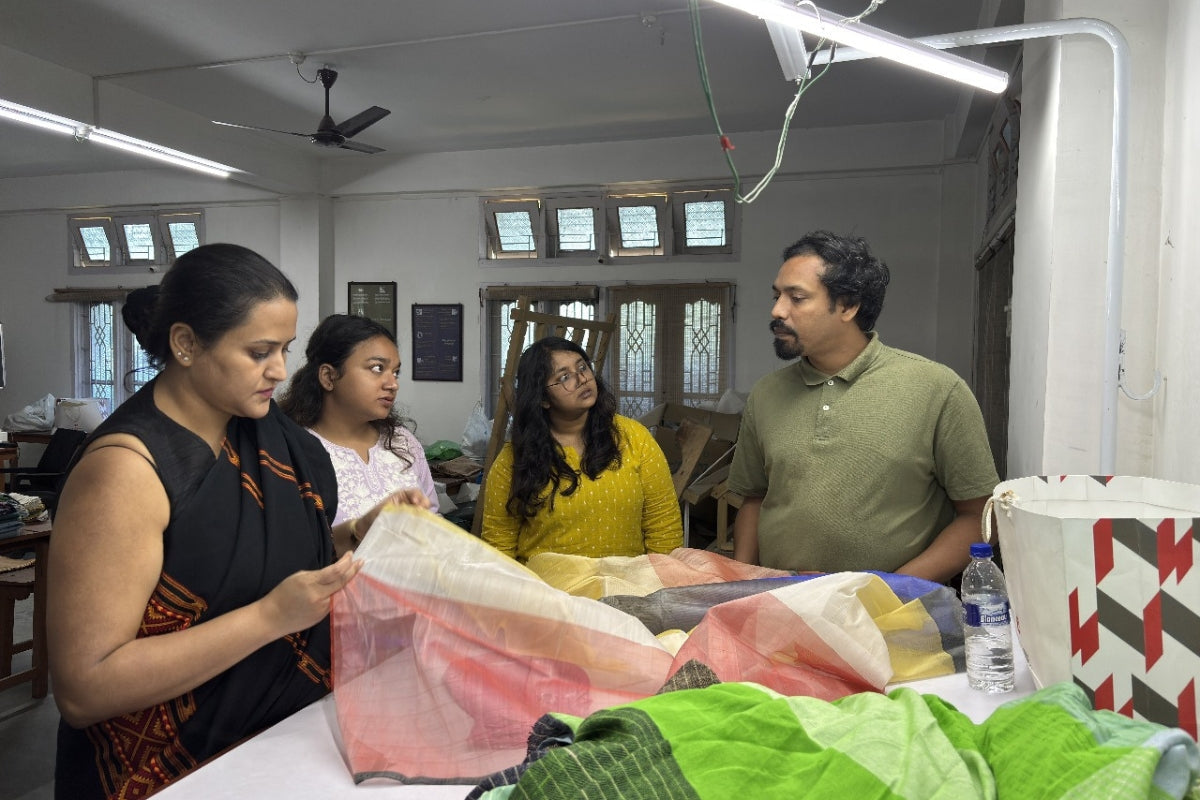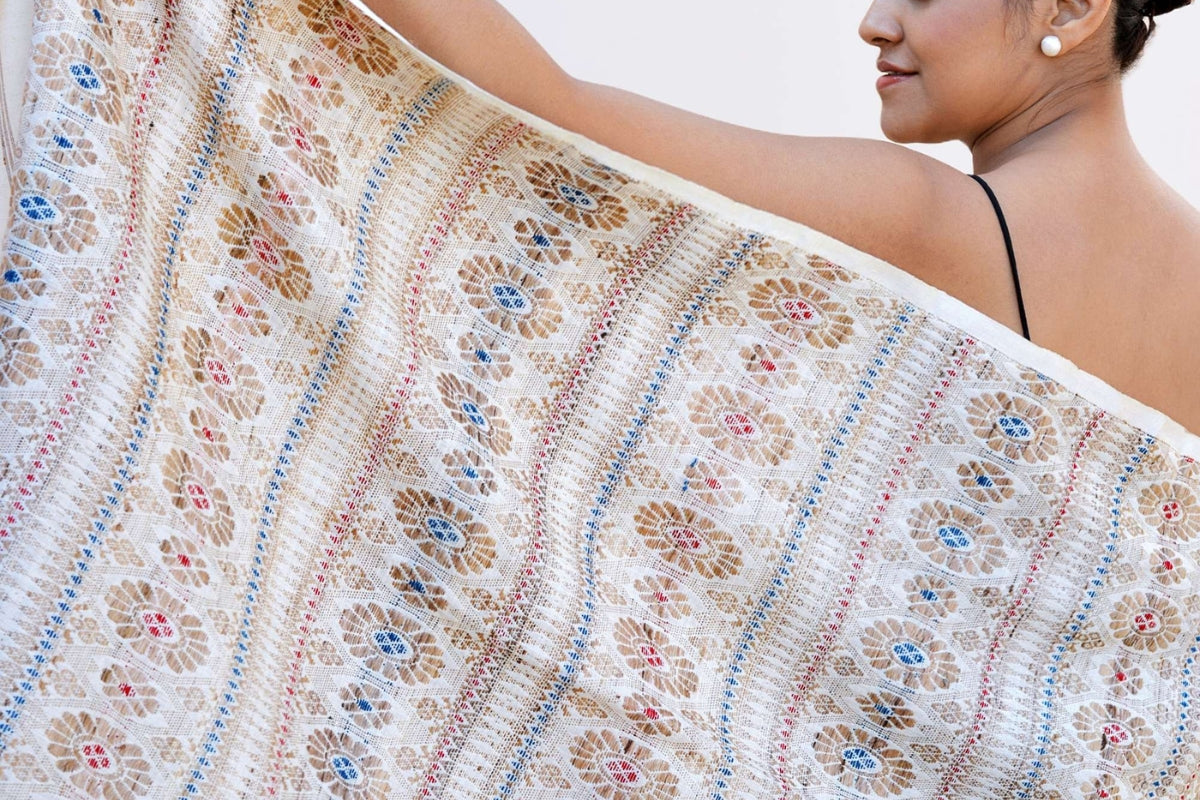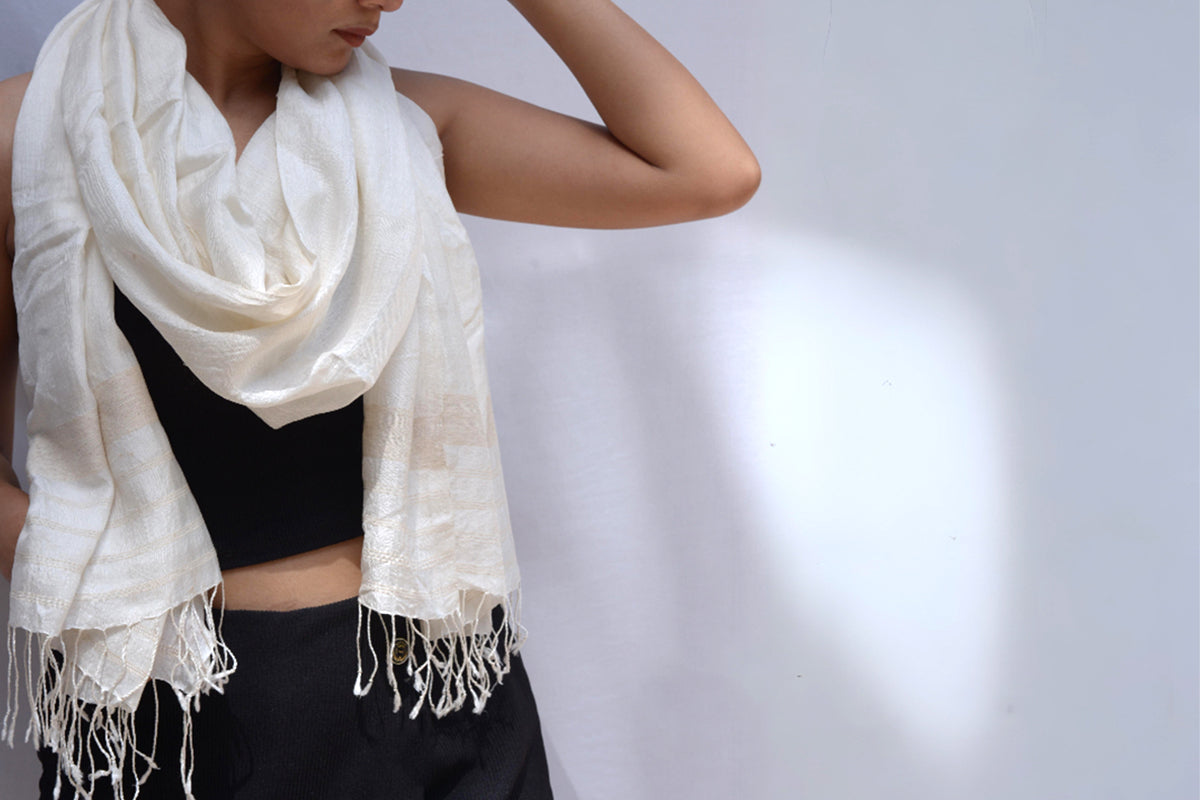Introduction
India's informal textile sector is a testament to centuries-old craftsmanship, representing 80% of the workforce and weaving together the nation's cultural fabric. These artisanal communities have preserved traditional textile-making techniques through generations, passing down knowledge as cultural heritage rather than scientific methodology.
The global fashion industry faces a critical environmental crisis, driven by mass production and synthetic materials. This reality demands innovative solutions that bridge the gap between tradition and sustainability. Our journey into natural textile innovation began with a simple vision: create sensory-rich, sustainable fabrics while empowering traditional maker clusters.
The path forward requires:
- Reimagining traditional techniques through scientific innovation
- Developing eco-friendly alternatives to synthetic materials
- Supporting local artisan communities
- Creating sustainable, market-viable products
This transformation isn't just about preserving ancient crafts—it's about revolutionizing how we think about textiles. By combining traditional wisdom with modern innovation, we're crafting a future where sustainable fashion isn't just a choice—it's the foundation of our textile industry.
Understanding the Informal Textile Sector in India
India's informal textile sector represents a vast, unorganized workforce operating outside formal business structures. This sector employs 85% of the country's textile workers, creating a complex network of artisans, weavers, and craftspeople who work from homes and small workshops.
Traditional maker clusters form the backbone of this sector, with each region specializing in distinct textile crafts:
- Chanderi in Madhya Pradesh - renowned for its lightweight silk-cotton weaves
- Maheshwar - celebrated for its unique cotton-silk blend saris
- Bhuj in Gujarat - famous for its intricate block printing techniques
When we started working in these maker clusters, we discovered textile creation was deeply rooted in cultural traditions rather than scientific methodologies. Each cluster preserves centuries-old techniques, passed down through generations as sacred knowledge rather than documented processes.
These maker clusters serve as living museums of India's textile heritage, maintaining ancient dyeing techniques, weaving patterns, and embroidery styles. Their work represents not just economic activity but the preservation of cultural identity through fabric.
The informal nature of these clusters creates unique challenges and opportunities. While their traditional methods ensure authenticity, the lack of standardization and scientific approaches limits their ability to scale and innovate in response to modern market demands.
Collaborating with Tata Trust's Livelihood Program for Craft-Based Innovation
We teamed up with Tata Trust's Livelihood Program at a critical time. Their goal of creating craft-based livelihoods perfectly matched our mission to transform natural textiles. The program's strong connections with artisan communities gave us valuable knowledge about traditional textile practices.
Bringing Together Two Different Perspectives
The collaboration brought together two distinct perspectives:
- Our Goal: Create sensory-rich natural textiles through maker co-experimentation
- Tata Trust's Vision: Revitalize communities with rich textile heritage
Gaining Technical Guidance from Textile Designers
Coming from engineering and business backgrounds, we found essential technical guidance through Tata Trust's textile designers. Their expertise helped bridge the gap between traditional craftsmanship and modern innovation requirements. The designers' understanding of both traditional techniques and contemporary market demands proved instrumental in shaping our brand's foundation.
Opening Doors to New Opportunities
This partnership opened doors to:
- Direct access to skilled artisan communities
- Technical knowledge transfer in textile development
- Structured approach to prototype creation
- Integration of traditional wisdom with modern design principles
The synergy between our teams has created a robust framework for developing innovative natural textiles while preserving cultural heritage.
Challenges and Opportunities in the Informal Textile Sector
There's a common misconception about the informal textile sector in India - many believe that lack of funding is the main obstacle to growth. However, our extensive fieldwork has shown us a different story.
The real challenge is the lack of innovation:
- Limited exposure to new techniques
- Resistance to adapting traditional methods
- Absence of systematic research approaches
- Disconnection from market demands
The workforce in the informal sector, which makes up 80% of India's textile production, relies on traditional practices that have been followed for generations. While these cultural methods are valuable, they often lack scientific methods and experimental approaches needed for progress.
Skills and Potential
Traditional maker clusters have exceptional skills that have been passed down through generations. However, their potential remains untapped because:
"Textile has never been a science for them" - an observation that sparked our mission to bridge this gap
Consequences of Innovation Deficit
This lack of innovation has several negative effects:
- Reduced market competitiveness
- Limited product diversification
- Stagnant growth patterns
- Underutilized natural resources
Our research suggests that addressing these gaps in innovation could bring about a significant change in the sector without losing its cultural identity. The solution lies in combining traditional knowledge with scientific methods for developing textiles.
Using Natural Fibers for Sustainable Textile Innovation
India's rich biodiversity offers a wide range of natural fibers that can be used for textile innovation:
Indigenous Natural Fibers
- Cotton: Various types grown in different regions
- Hemp: Cultivated in Uttarakhand and Himachal Pradesh
- Bamboo: Found abundantly in Northeast India
- Banana fiber: Obtained from agricultural waste
- Nettle: Grown in the Himalayan areas
The economic viability of these materials depends on several key factors:
Cost-Effectiveness Metrics
- Local availability and seasonal variations
- Processing requirements and technology needs
- Labor intensity and skill requirements
- Market demand and price points
Sustainable fabric development requires balancing environmental impact with production efficiency. Our research indicates optimal processing methods that minimize water usage while maintaining fiber strength. Small-scale trials with hemp-cotton blends have demonstrated 40% reduction in water consumption compared to traditional processing methods.
The integration of these natural fibers into modern textile applications demands innovative approaches to fiber extraction, processing, and finishing. Current experiments with banana fiber show promising results in creating durable, moisture-wicking fabrics suitable for everyday wear.
Designing Diverse Sensory Experiences with Blended Natural Textiles
Natural fibers are essential in our journey of textile innovation. Each fiber has its own special qualities:
- Cotton: Soft, breathable, versatile
- Hemp: Durable, antimicrobial, UV-resistant
- Nettle: Strong, lightweight, temperature-regulating
- Bamboo: Moisture-wicking, thermal-regulating, silky
Our experiments with blending techniques have shown us exciting ways to create unique tactile experiences. By changing specific factors, we can make textiles that stimulate multiple senses:
Softness Control
- Combining cotton with nettle fibers at different ratios
- Adjusting mechanical processing for surface texture
- Using natural enzyme treatments for increased smoothness
Structural Integrity
- Adding hemp for reinforcement
- Modifying weave density
- Optimizing fiber length
Transparency Levels
- Using loose weave techniques with bamboo fibers
- Varying layer thickness
- Strategically placing yarn
These blending methods allow us to create textiles that range from lightweight summer fabrics to strong winter materials. Each blend goes through thorough testing to ensure it meets both visual and practical requirements while staying sustainable.
The skill of blending has opened up new opportunities for customization, enabling us to create textiles that meet specific needs while respecting traditional craftsmanship.

From Research to Reality: Prototyping Innovative Natural Textiles
Our 10-month R&D journey has yielded remarkable breakthroughs in natural textile development. The research phase unfolded through distinct milestones:
- Month 1-3: Intensive fiber analysis and sourcing
- Month 4-6: Experimental blending techniques development
- Month 7-8: Initial prototype creation
- Month 9-10: Refinement and optimization
The prototyping process demanded meticulous attention to detail. Each textile sample undergoes rigorous quality assessment:
- Tensile strength testing
- Color fastness evaluation
- Wear resistance measurement
- Washing durability checks
Our quality control protocol includes a mandatory resting period where prototypes face simulated aging conditions. This critical phase reveals potential long-term performance issues:
"Quality isn't just about immediate performance - it's about understanding how these textiles will behave months and years into their lifecycle."
The current testing phase examines:
- Fiber stability under various environmental conditions
- Structural integrity after repeated use
- Color retention through multiple wash cycles
- Texture preservation over time
These comprehensive quality checks shape our prototype refinement process, pushing us closer to creating durable, sustainable natural textiles that meet both aesthetic and functional requirements.

The Fulfillment Journey: Innovating for a Sustainable Future in Fashion
The transformation of natural fibers into innovative textiles brings a deep sense of purpose to our work. Each successful prototype represents a step away from synthetic materials and centralized manufacturing - the primary culprits behind fashion's environmental crisis.
Our commitment to slow fashion principles has yielded remarkable results:
- Community Revival: Local artisans now lead textile innovation, breathing new life into traditional techniques
- Environmental Impact: Natural fiber processing reduces water pollution and chemical waste
- Economic Growth: Decentralized production creates sustainable income streams for rural communities
The journey of developing eco-friendly fabrics has revealed the power of patient innovation. Working alongside skilled craftspeople, we've witnessed traditional knowledge merge with modern design thinking to create textiles that honor both heritage and sustainability.
This hands-on experience has proven that fashion can be both beautiful and responsible. By prioritizing local materials and indigenous expertise, we're building a model where environmental stewardship and artistic expression coexist harmoniously.
Conclusion: Embracing Patience, Structure, and Objectivity for Meaningful Impact
Our vision extends beyond creating innovative natural textiles - we're building a movement that transforms the fashion industry's relationship with sustainability. Through conscientious innovation and deep respect for traditional craftsmanship, we're proving that beautiful, high-quality textiles can coexist with environmental responsibility.
Your role in this transformation matters:
- Choose natural, sustainably-produced textiles for your wardrobe
- Support local artisans and maker communities
- Learn about traditional textile techniques
- Share knowledge about sustainable fashion practices
The future of fashion lies in the harmonious blend of innovation and tradition. By embracing slow fashion values and supporting sustainable practices, you become part of a powerful shift toward a more conscious, responsible, and beautiful textile industry.







